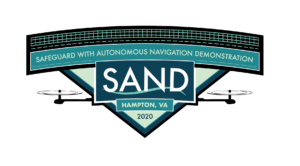
NASA is teaming up with small business owners to address safety issues surrounding autonomous drone flights.
The agency has launched Safeguard with Autonomous Navigation Demonstration, a competition to examine aerial hazards such as UAV flights outside of approved airspace, unsafe drone flights near people and property and critical system failure.
“NASA is working to deliver technologies designed to enable a safe and efficient national airspace that is convenient, affordable, and accessible for both existing and emerging operations,” a NASA spokesperson said.
“The SAND challenge will give small businesses the opportunity to compete in an autonomous unmanned aerial vehicle competition designed to push the boundaries of traditional operations. The competition will demonstrate NASA technologies designed to assure safe operations of autonomous vehicles, promote public confidence in increasingly autonomous commercial operating capabilities, create opportunities for collaboration and facilitate community wide learning while capturing public imagination.”
NASA will equip competition drones with its Safeguard tech for course navigation. The technology comprises aviation quality geo-fencing technology that independently monitors vehicle position and speed.
“Safeguard is designed to supersede or override non-standardized manufacturer UAV geo-fencing technology to ensure the UAV operates only within approved airspace, assuring safety of UAS flight operations to meet regulatory and safety requirements. The SAND challenge will demonstrate the autonomous surveillance of a post-natural disaster scenario amidst critical infrastructure while also demonstrating the utility of Safeguard to provide the safety assurance necessary to allow these autonomous operations to take place.”
The current Safeguard prototype weighs approximately 1 pound without hardware optimization. Innovations include formally verified algorithms to monitor and predict impending boundary violations through “flight termination trajectory estimation.”
The system can be configured without sole reliance on the global positioning system to avoid known problems with GPS inaccuracies and unavailability. Perimeter boundaries are described using polygons, which can approximate almost any shape with few limits to the number of shapes and boundaries.
NASA is also seeking qualified judges for the competition. Contact Genevieve Ebarle at (757) 325-6999 or genevieve.ebarle@nianet.org to apply.
Jason is a longstanding contributor to DroneLife with an avid interest in all things tech. He focuses on anti-drone technologies and the public safety sector; police, fire, and search and rescue.
Beginning his career as a journalist in 1996, Jason has since written and edited thousands of engaging news articles, blog posts, press releases and online content.
Email Jason
TWITTER:@JasonPReagan
Subscribe to DroneLife here.







[…] DRONELIFE […]